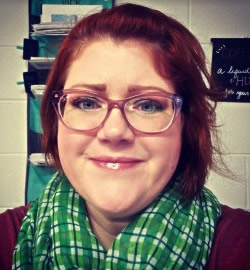Next Gen Navigator
Looking Back and Moving Forward: How Daily Dos Are a Place to Start
By Nicole Vick
Posted on 2020-06-25
Disclaimer: The views expressed in this blog post are those of the author(s) and do not necessarily reflect the official position of the National Science Teaching Association (NSTA).
As I reflect on what worked and what didn’t with distance learning, I am also considering how I can improve my practice when school resumes this fall. I teach in a rural school district, which means I have quite a few different preps. During remote learning this spring, I tried, with various levels of success, to transition lessons for virtual learning for three very different courses. While I felt I succeeded in revamping some portions, I wished I had a better way, one that could alleviate a lot of stress.
During the school year, my Biology II course was using inquiry-Hub storylines. When COVID-19 closed schools, my class was about halfway through, the storyline “How can science make our lives better?" As we continued with the storyline, some of my students made great progress, while others did not engage at all. Meanwhile, my chemistry course was in the middle of piloting another storyline, and I attempted to adhere to the storyline’s intent in an asynchronous fashion. My third prep was for my Environmental Science students. I struggled the most with this one because we had just finished a 5E unit on climate change. I was really wondering what to do!
Daily Dos provided choice and variety, allowing me to select what best met my students’ needs and aligned with the topic I was teaching. For my Environmental Science students, the Daily Do How does a pandemic cause less CO2? was the perfect resource. My students were able to investigate the phenomenon of decreasing CO2 levels resulting from less human travel. This Daily Do allowed me to give my students a resource that engaged their thinking and was relevant to their lives.
Next year, I plan to use the Daily Dos with my students, particularly in the event of school closures. Luckily, several of the high school Daily Dos are based on the inquiryHub biology curriculum: Why does population size change?; Where do “new” diseases come from?; and How can vaccinating one population affect another? Using the format of these Daily Dos, I will be able to not only better engage my students in the materials, but also will provide a sense of continuity to their lessons.
I am fairly certain I will teach chemistry again next year, and I intend to use several of the Daily Dos in that course as well. Why is water sphere-shaped in space? would be a great introduction to properties of water because it includes easy at-home investigations that can help students better understand the properties of water. My students could then further their understanding of water properties using How will the charged objects interact? to delve even deeper into attractive forces.
I am not sure if I will teach Earth and Space Science or Environmental Science next year, but I plan to use some Daily Dos for either course. I will use How does a pandemic cause less CO2? again, or if I want to start with space topics, we can examine How do we know what stars are made of?
I also am unsure if I will teach Anatomy and Physiology next year, but if I do, I will employ an investigative approach, including the Howard Hughes Medical Institute (HHMI) resource The Biology of Skin Color. Luckily (again!), a Daily Do has been created from that activity: Why do some people get easily sunburned? When we investigate cancer, and what controls it, we can use Why is cancer so rare in elephants?
While I am apprehensive about what the future may or may not hold, I do feel better equipped with resources that will reduce the stress of transitioning to online learning. I plan to share the Daily Do resources with the other high school science teachers in my district who teach physical science, Earth and space science and biology. As we work together, we can use the format and ideas in the Daily Dos to create an engaging series of lessons that we can use synchronously or asynchronously with our students.

Nicole Vick is an 18-year veteran high school teacher who has taught a wide variety of science courses. She currently serves as vice president for the Illinois Science Teachers Association and served as NSTA’s District XII director from 2017 to 2020. In addition, she has helped develop curriculum and provide professional development for teachers. In her spare time, she enjoys traveling and taking her daughter to concerts and musicals.
Note: This article is featured in the June 2020 issue of Next Gen Navigator, a monthly e-newsletter from NSTA delivering information, insights, resources, and professional learning opportunities for science educators by science educators on the Next Generation Science Standards and three-dimensional instruction. Click here to sign up to receive the Navigator every month.
The mission of NSTA is to promote excellence and innovation in science teaching and learning for all.
NGSS Three-Dimensional Learning High School


